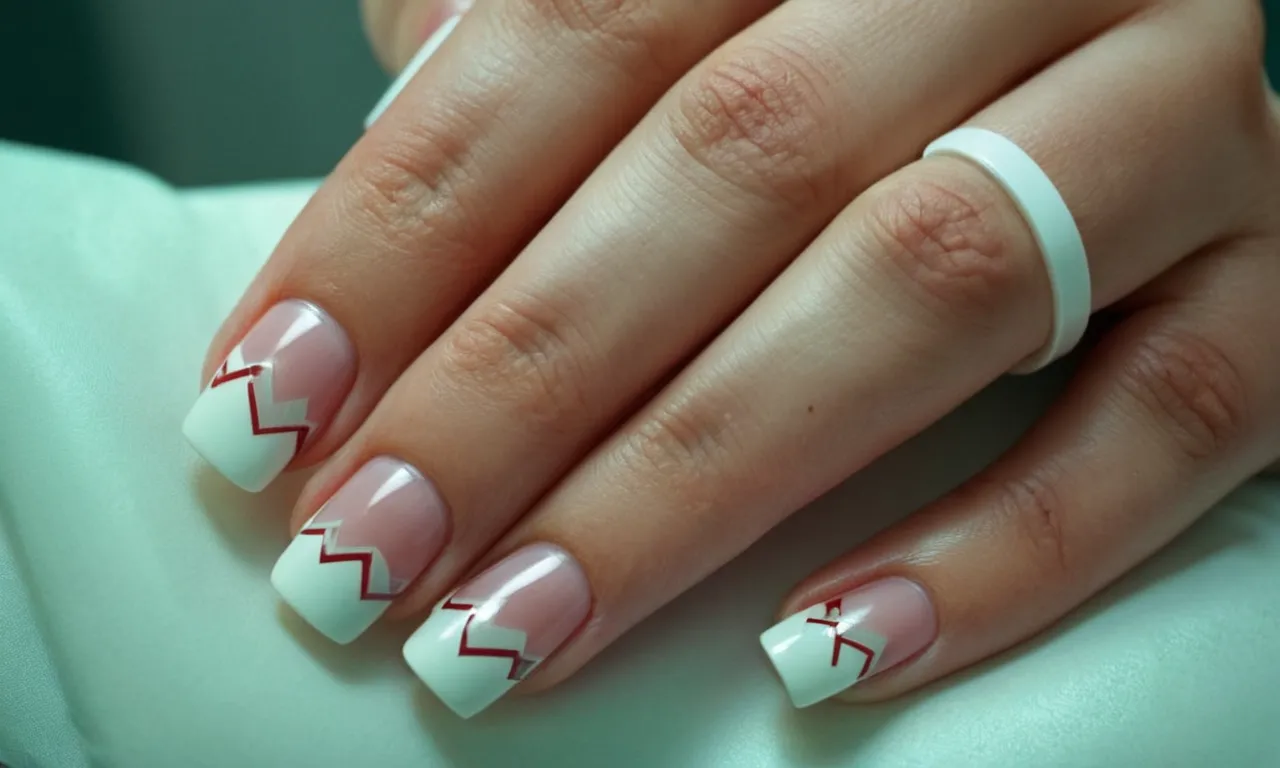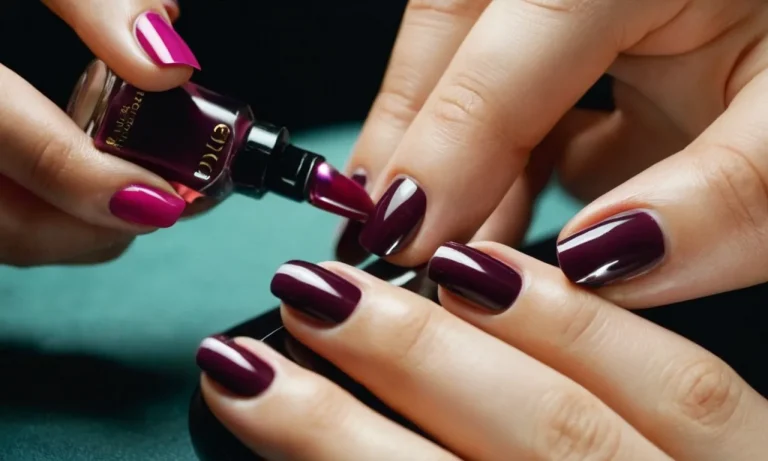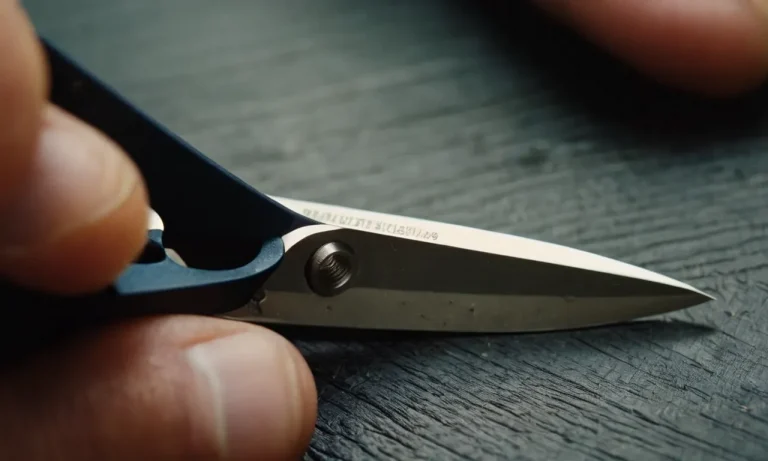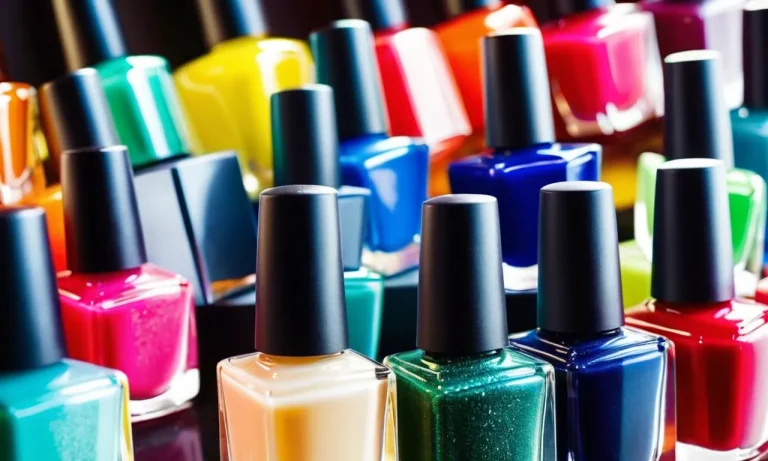How Long Can A Nurse’S Nails Be? A Complete Guide
If you’ve ever wondered whether there’s a rule for how long a nurse’s nails can be, you’re not alone. As a nurse, keeping your nails neatly trimmed and at an appropriate length is an important part of patient safety and infection control.
If you’re short on time, here’s a quick answer: The recommended maximum nail length for nurses is 1⁄4 inch or 0.6 cm past the tip of the finger. Any longer could harbor germs or interfere with wearing gloves.
OSHA and CDC Guidelines for Nail Length
CDC Recommendations
The Centers for Disease Control and Prevention (CDC) provides recommendations regarding healthcare personnel hand hygiene to help prevent the spread of infections. According to the CDC guidelines, fingernails should be kept short, at a length less than 1⁄4 inch long or approximately 0.6 centimeters.
Keeping nails short and clean underneath prevents a buildup of dirt and bacteria, which could potentially be transmitted to patients. The CDC recommends using an emery board or nail clippers to gently smooth rough edges.
Using sharp nail files is not advised as they may cause microscopic tears in the skin which allow more bacteria to accumulate.
In addition to nail length, the CDC advises that artificial nails, nail extenders, and chipped nail polish should not be worn by healthcare personnel working in direct patient care situations. The extra length and gaps around the nails can harbor more germs.
Neutral-colored nail polish is acceptable if kept fresh.
OSHA Regulations
The Occupational Safety and Health Administration (OSHA) Bloodborne Pathogens standard applies to occupational exposure to human blood and other potentially infectious materials that may transmit bloodborne diseases. Though focused on blood, the principles help reduce overall infection transmission.
Under this standard, OSHA does not provide a specific maximum nail length, but requires that “fingernails shall be clean and neatly trimmed”. The key factors are that nails must not puncture gloves, and should not interfere with proper hand hygiene.
| CDC Guidelines | OSHA Regulations |
| Nails kept under 1⁄4 inch long | No specific length but nails must be clean, neat and trim |
| Smooth sharp edges gently | Should not puncture protective gloves |
| No artificial nails or polish | Must not interfere with hand hygiene |
Why Nail Length Matters for Nurses
Infection Control and Hygiene
Nurses are constantly using their hands throughout the day, so keeping nails short and clean is crucial for infection control. Long nails can harbor more dirt and germs, especially under the nail beds. Even with thorough hand washing, longer nails provide more surface area for pathogens to linger.
Short nails, trimmed to less than 1⁄4 inch long, allow for better hygiene and reduce the risk of spreading infections in healthcare settings.
Many hospitals and nursing schools require short nails as part of dress code policies. The Center for Disease Control (CDC) recommends that healthcare workers keep natural nails less than 1/4 inch long for proper hand hygiene.
Artificial nails are banned in most healthcare settings because they have been linked to outbreaks of bacteria and fungal infections.
Proper Use of Gloves
Wearing gloves is essential for nurse safety and infection prevention. However, long nails can cause tears and punctures in gloves, rendering them ineffective. A 2012 study found that even with double gloving, healthcare workers with long nails punctured the inner glove up to 96% of the time during procedures.
This risked exposing patients and providers to bloodborne pathogens like HIV, hepatitis B and hepatitis C.
Nurses with long nails are also more likely to experience tears in their gloves during routine activities like changing linens or washing patients. Any small openings can allow viruses, bacteria and bodily fluids to pass through.
Keeping nails short and filed blunt prevents rips in gloves and protects patients and nurses from contamination.
Patient Safety
Long, sharp nails pose a direct danger to patients’ skin. Nurses provide intimate care that requires touching fragile sites like injuries, IV insertion points and surgical incisions. Nails longer than 1⁄4 inch increase the risk of scratching or cutting a patient.
Bandages can also get caught on long nails, disturbing wounds and dressings.
Many nursing duties like changing diapers, grooming and dressing also require meticulous use of hands. Patients with paper-thin skin and conditions like dementia are especially vulnerable to scratches and cuts from overgrown nails.
Keeping nails conservatively short is safer for patients and prevents unnecessary harm.
For some nail hygiene tips, the WHO recommends:
- Trimming nails straight across to maximize cleaning under them
- Filing nails to create smooth edges that won’t catch on gloves
- Thoroughly scrubbing under nails during hand washing
- Using an oil-based lotion after washing to prevent nail splitting
By being mindful of nail length and care, nurses can optimize infection control and avoid harming fragile patients. Most practice settings regulate nail length for hygienic and safety reasons. Following hand hygiene protocols ensures nurses can perform physical care safely while preventing spread of disease.
Best Practices for Keeping Nails Short
Use High-Quality Clippers
Investing in a good pair of nail clippers is key for nurses who need to keep their nails short. Look for clippers made of high-quality stainless steel that have sharp, precise blades. This will allow you to get a clean, even cut without jagged edges or splits that can snag gloves or harbor bacteria.
Swing-out or lever-style clippers tend to offer the best control and visibility. It’s also a good idea to disinfect your clippers regularly by cleaning with alcohol.
File and Buff Edges
After clipping, use a nail file to smooth and shape your nails. Focus on filing in one direction and avoid sawing back and forth, which can weaken nails. Use a fine-grit emery board or metal file specifically designed for fingernails. Gently round the tips of your nails so there are no sharp corners.
Finish by buffing the surface of your nails with a buffing block or soft file. This removes any uneven ridges and gives nails a healthy shine. Buffing helps prevent chipping and peeling, so nails stay shorter longer.
Schedule Regular Manicures
Getting professional manicures every 2-3 weeks is a great way for nurses to maintain shortened, tidy nails. Manicurists can expertly clip and shape your nails, get rid of any hangnails or calluses, and use cuticle remover and moisturizers to keep your nails and skin healthy.
Regular manicures also help deter you from biting or picking at your nails. Ask the manicurist to keep nails trimmed short, with rounded edges. Many salons now cater to nurses and medical professionals by providing quality nail care that conforms to clinical standards.
Consider Gel Polish
Since chipped nail polish is a no-go for nurses, gel manicures can be a practical option. Gel polish is cured under UV light, creating an ultra-hard, chip-resistant finish that can last up to 3 weeks with no touch-ups. This allows nails to grow out while staying perfectly polished.
Gel manicures make nails less prone to breaking as well. Just be sure to go to a reputable salon-poor technique can damage nails. Always have the polish removed properly rather than peeling off yourself. Schedule fills every 2-3 weeks to maintain a short length.
Frequently Asked Questions
Can Nurses Have Acrylics?
When it comes to acrylic nails, the rules for nurses are quite strict. Most hospitals do not allow nurses to wear acrylics or any nails that extend past the tip of the finger. The main reason is that bacteria and pathogens can gather under long nails, putting patients at risk of infection.
According to a 2021 study, nurse fingernails harbored more potentially harmful bacteria than any other part of their hands. Nurses with long nails were spreading bacteria at a much higher rate. Yikes!
So in the vast majority of clinical settings, the answer is no – nurses cannot have long, elaborate acrylic nail sets. Most hospitals limit nurses to a natural nail length just covering the tip of the finger. And no color, glitter, jewels or other embellishments that could hide grime.
What About Nail Polish?
Okay, so no blinged-out mega-claws – but can nurses wear nail polish? Many facilities do allow nurses to have polished nails, as long as certain guidelines are followed.
First, the polish needs to be well-kept – no chipping, cracks, etc. This provides less space for bacteria to hide. Most hospitals require light colors only – nothing too dark or sparkly. And the length still needs to be kept trimmed short.
There are exceptions, however. ICU nurses often cannot have nail polish, since subtle changes to nail bed color are monitored. And operating room nurses may be limited as well to decrease infection risks.
Are There Exceptions?
In most cases, hospitals have strict standards on nurse fingernails to protect patients. But some facilities may be more relaxed, especially in outpatient settings. Mental health nurses, school nurses or private practice nurses may have more leeway.
The best policy is to check your employer’s written guidelines. If length or polish is not explicitly prohibited, document policies should still emphasize hygiene and infection control as top priorities.
At the end of the day, being a nurse is all about putting patients first – even if that means sacrificing your fab manicure! As Florence Nightingale herself said: “For the sick it is important to have the best.”
Conclusion
Keeping nails neatly groomed is an important but often overlooked aspect of nursing best practices. By following the CDC and OSHA guidelines limiting nail length to 1⁄4 inch past the tip of the finger, nurses can optimize infection control, properly wear PPE, and ensure patient safety.
While special occasions may call for slightly longer nails, the recommend nurse’s nail length still applies both on and off duty for optimal hygiene. Taking simple steps like regular trimming, filing, buffing and professional manicures can keep nails attractive-looking while still short.
By putting patient wellbeing first with conscientious nail care, nurses can stay healthy and practice safely.







